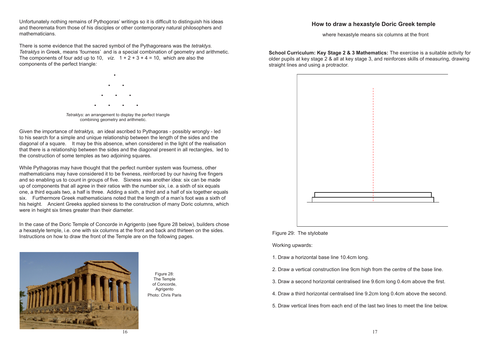

This lesson is suitable for older students at Key Stage 2 and all students at Key Stage 3. It looks at the design of the Doric Temple of Concorde in Agrigento through the eyes of Classical philosophers exploring number theory.
While Pythagoras may have thought that the perfect number system was fourness, other mathematicians may have considered it to be fiveness, reinforced by our having five fingers and so enabling us to count in groups of five. Sixness was another idea: six can be made up of components that all agree in their ratios with the number six, i.e. a sixth of six equals one, a third equals two, a half is three. Adding a sixth, a third and a half of six together equals six. Furthermore Greek mathematicians noted that the length of a man’s foot was a sixth of his height. Ancient Greeks applied sixness to the construction of many Doric columns, which were in height six times greater than their diameter.
In the case of the Doric Temple of Concorde in Agrigento , builders chose a hexastyle temple, i.e. one with six columns at the front and back and thirteen on the sides.
Illustrated easy-to-follow instructions for students on how to draw the front of the Temple are available on the following pages.
Something went wrong, please try again later.
This resource hasn't been reviewed yet
To ensure quality for our reviews, only customers who have downloaded this resource can review it
Report this resourceto let us know if it violates our terms and conditions.
Our customer service team will review your report and will be in touch.